Abstract
Comparative specificity data have been presented for the interaction of anti-hapten antibody with a series of structurally related haptens and for the stimulation by hapten-guinea pig albumin (GPA) conjugates of DNA synthesis in lymph node cell cultures from guinea pigs immunized with a given conjugate.
A good correlation in the specificity of serum anti-hapten antibody and in the specificity of stimulation of DNA synthesis has been demonstrated. Thus, mutual serologic and stimulatory cross-reactivity exist between the aminocaproates and GPA conjugates of the p-iodophenysulfonyl and toluenesulfonyl groups. Poor or undetectable serologic and stimulatory cross reactivity exist in the other combinations tested.
The data is consistent with the notion that the interaction of antigen with an antibody-like cellular receptor is crucial to the elicitation of cellular immune responses.
Full text
PDF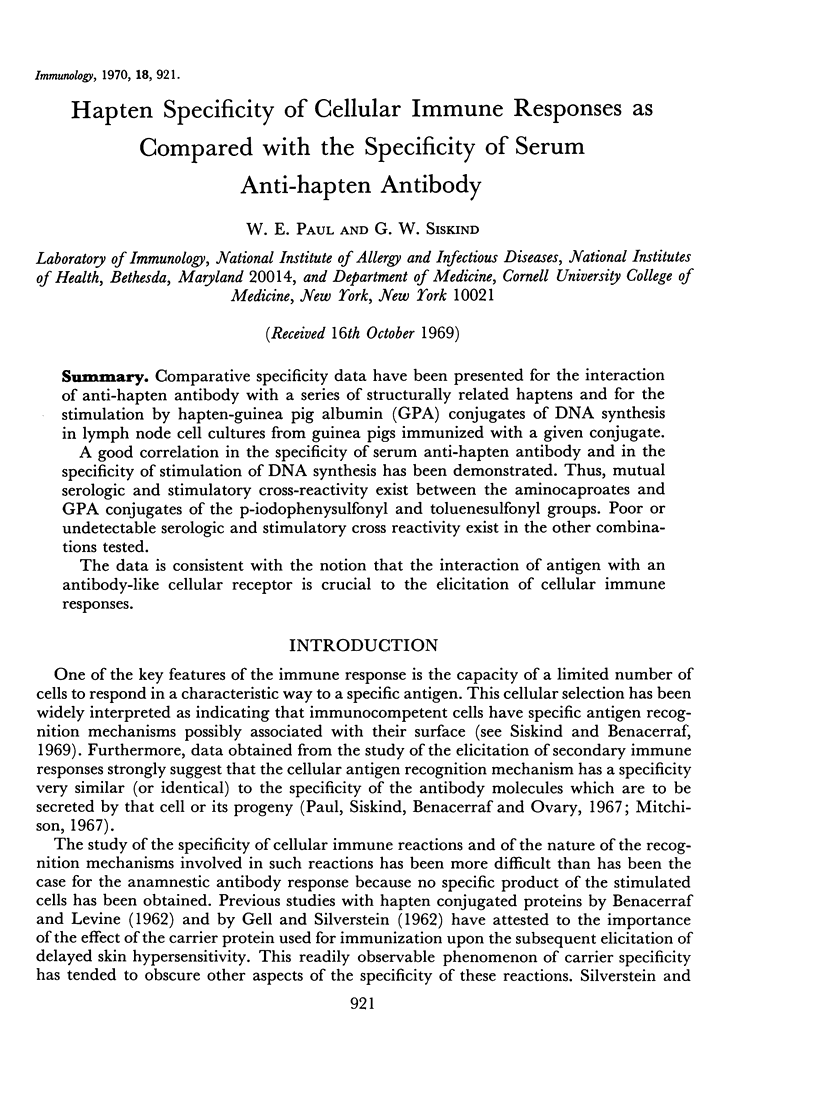
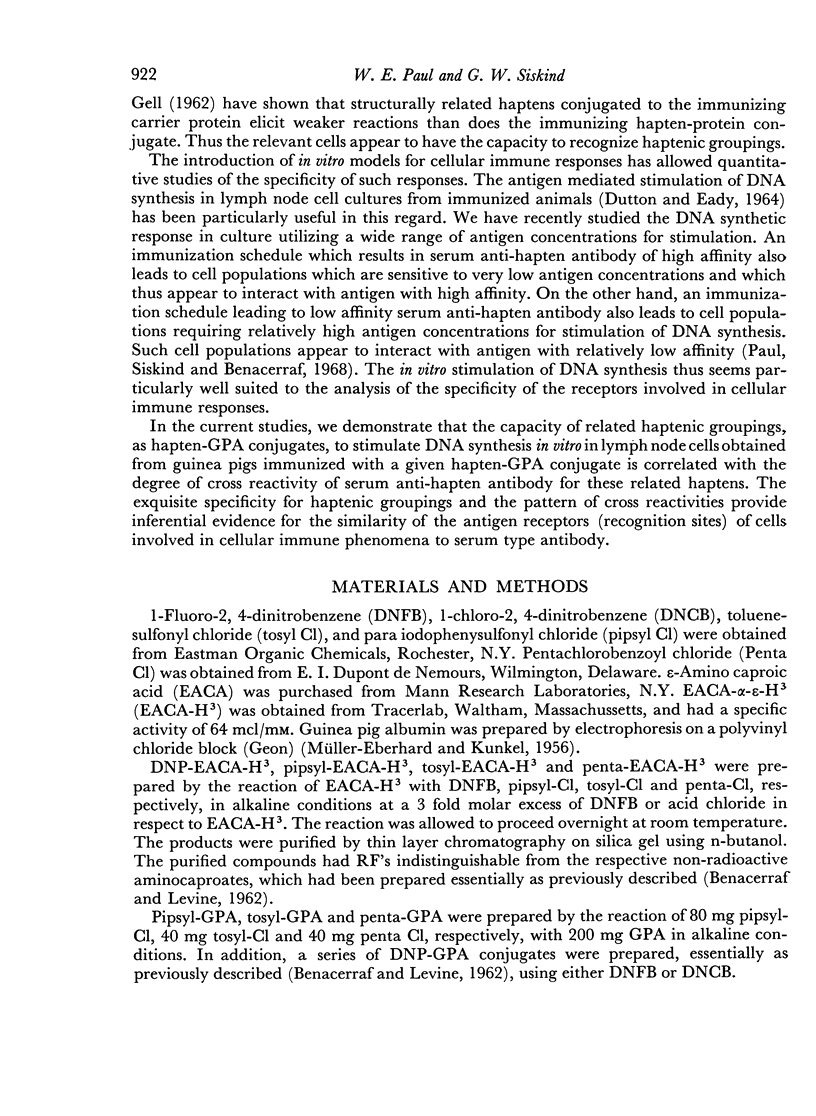
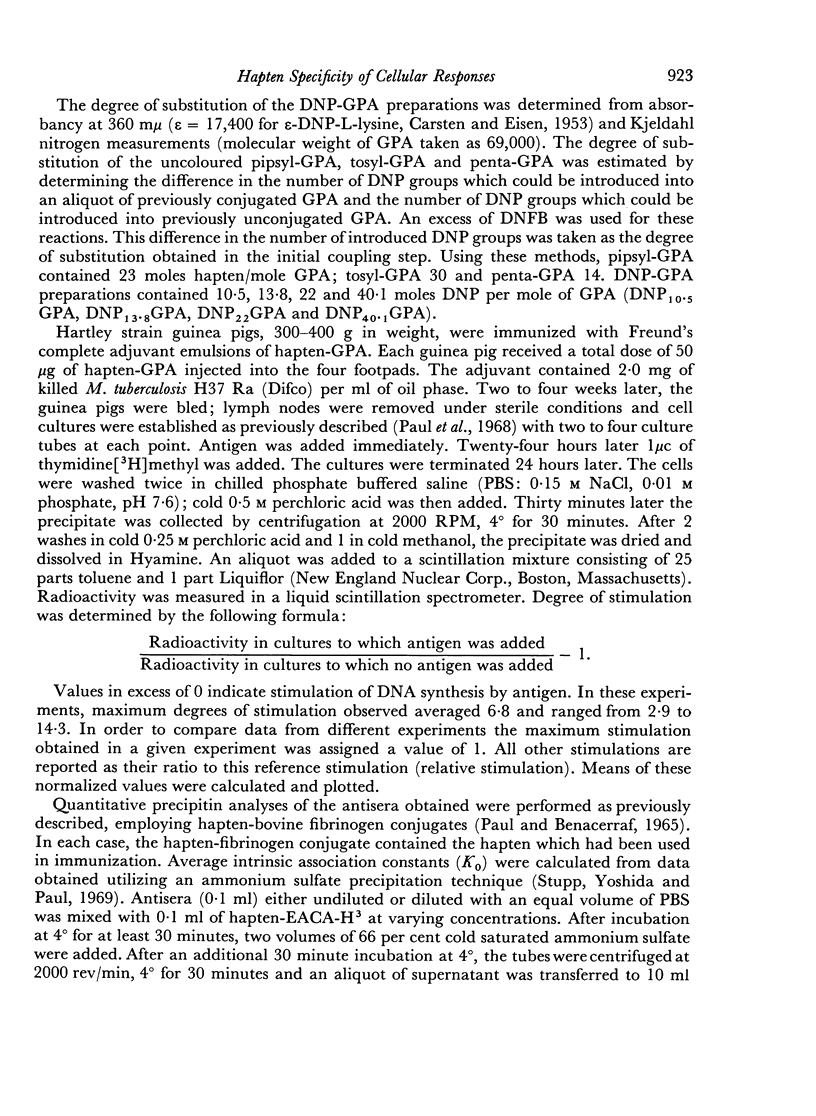
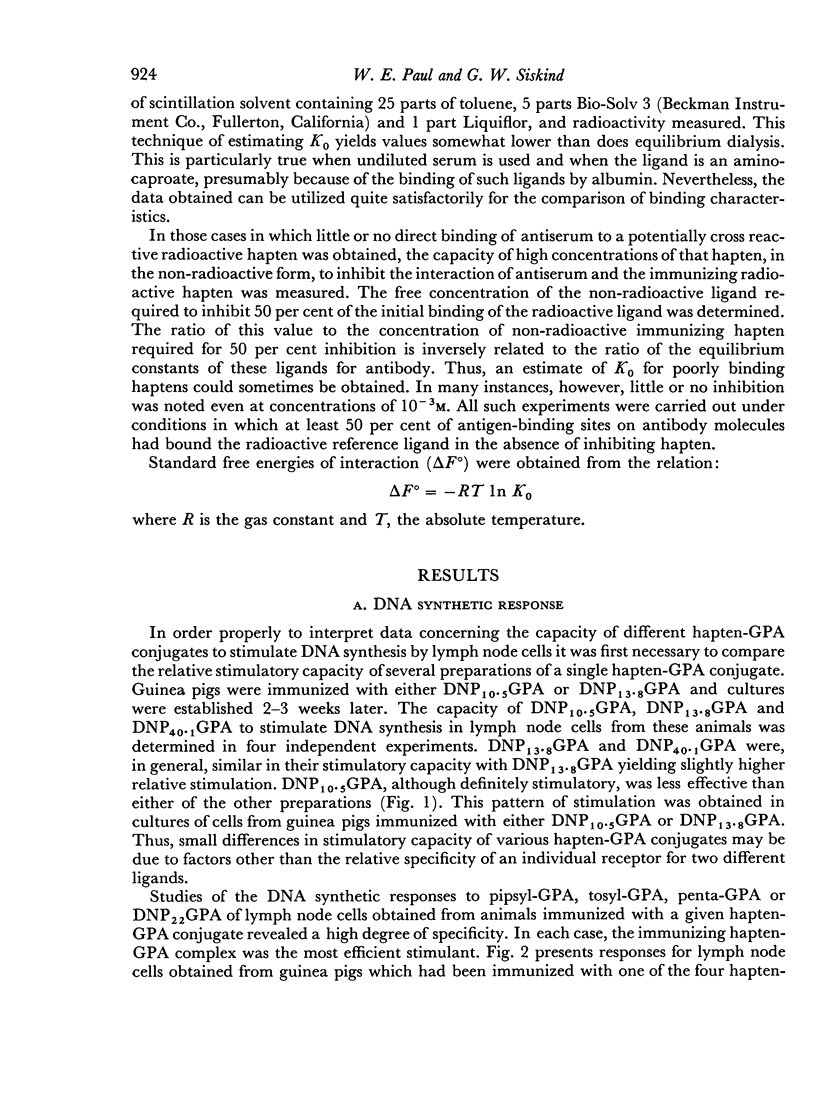
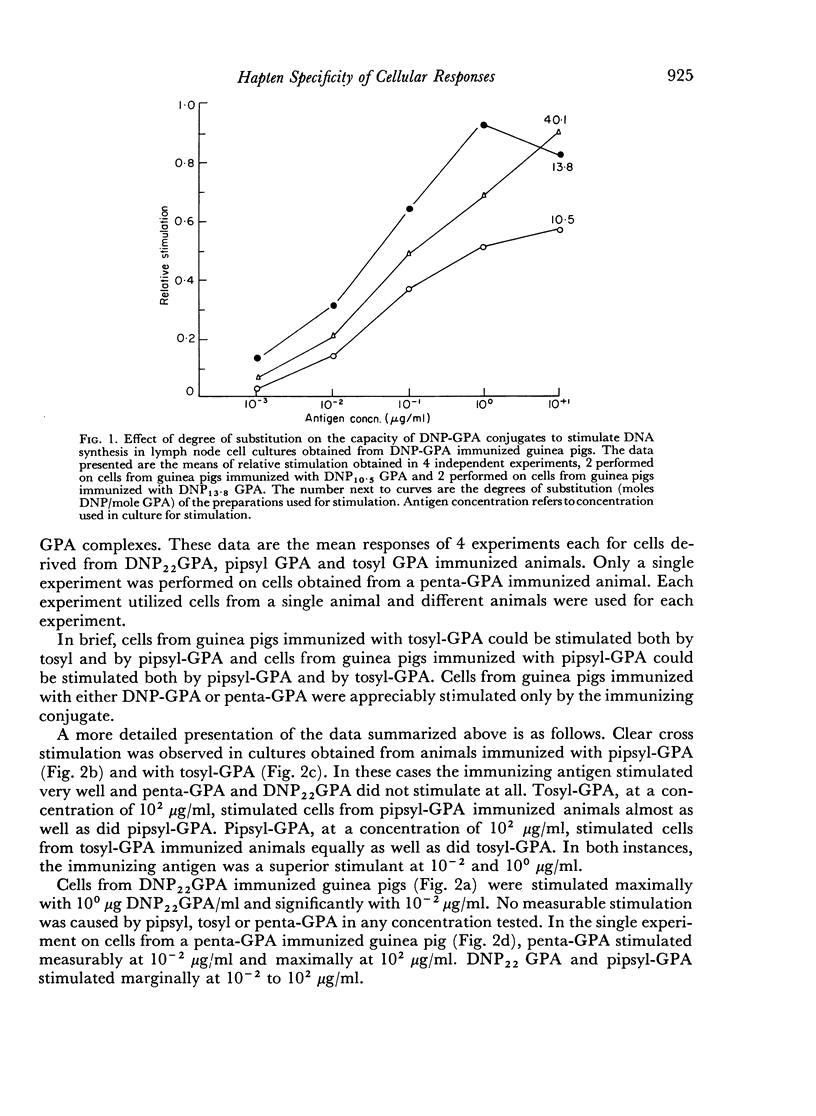
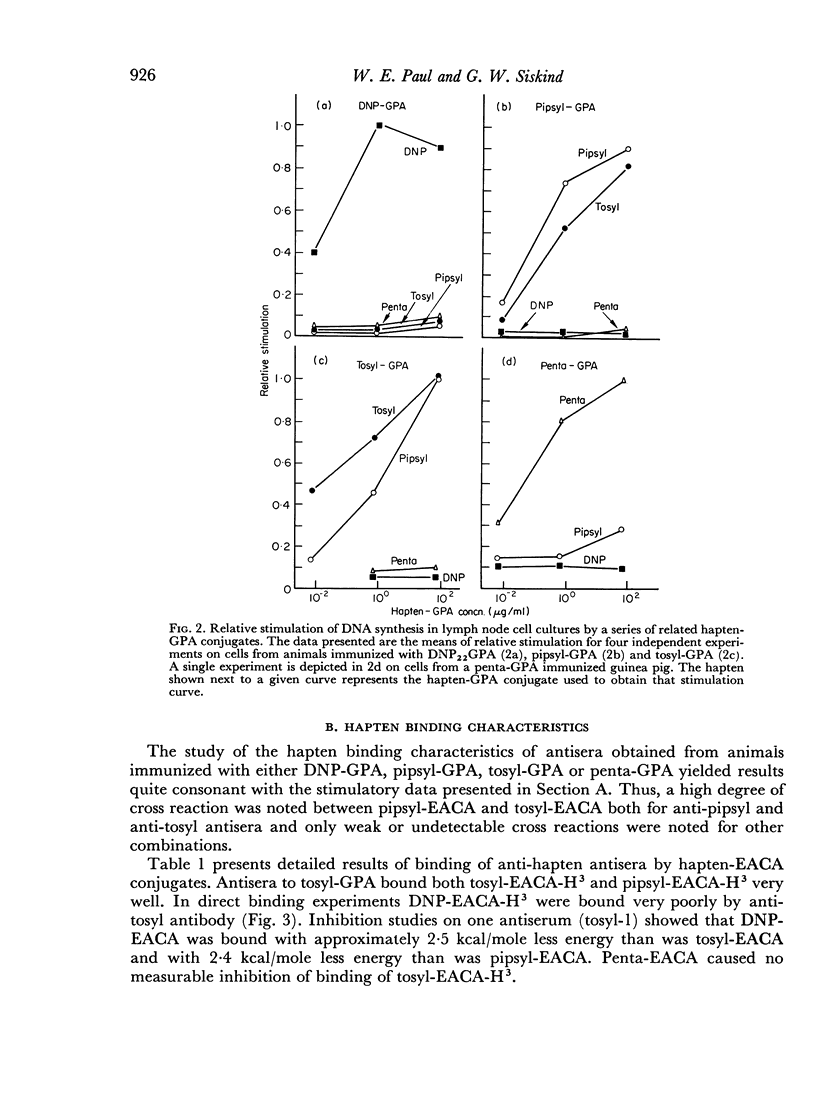
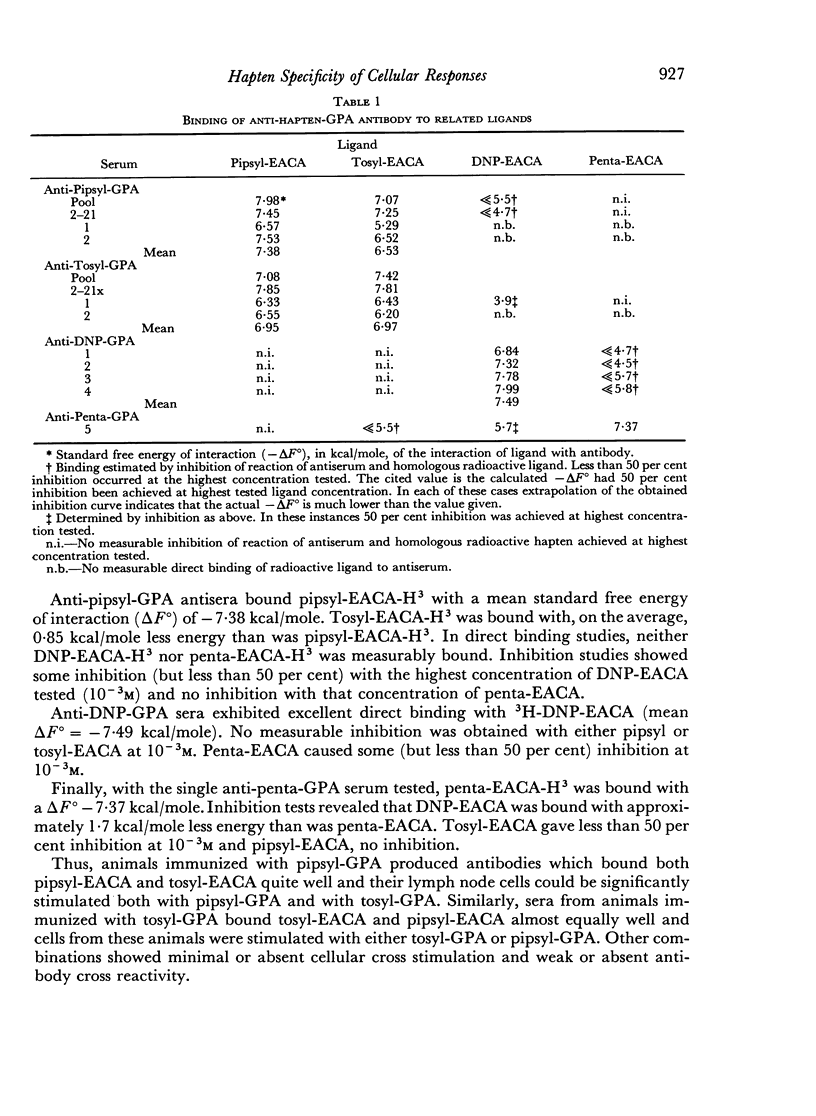
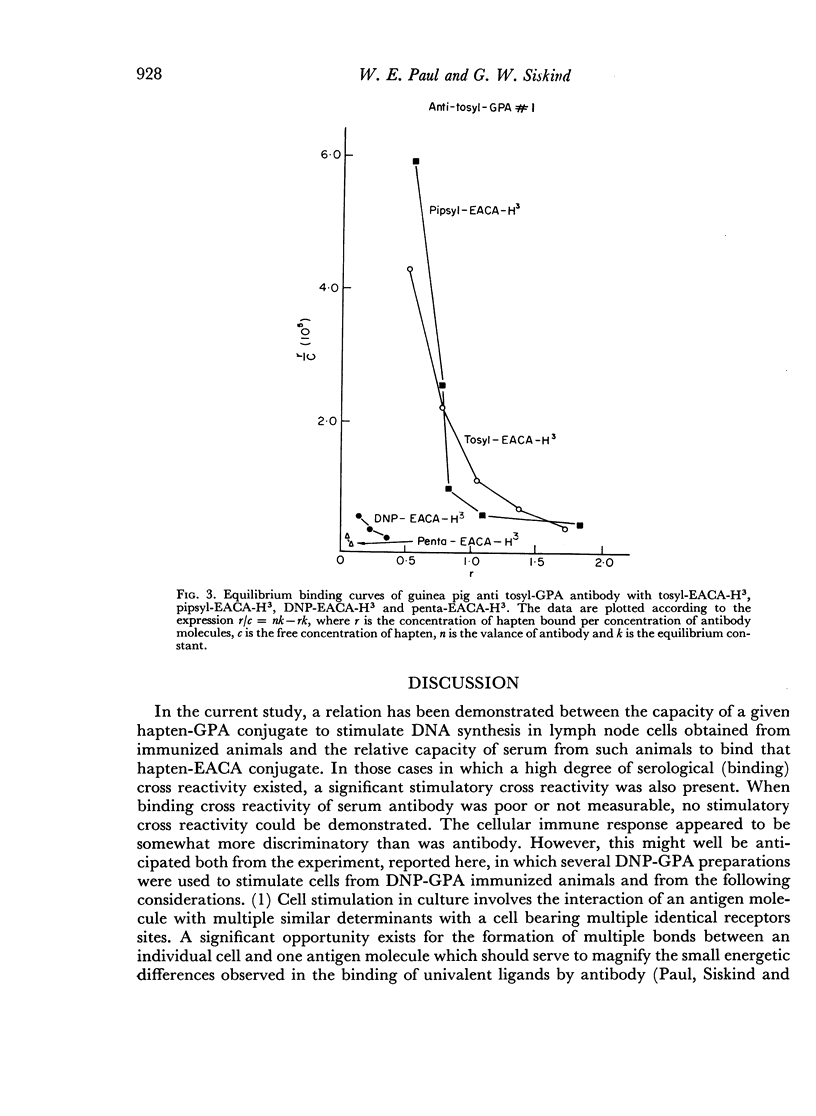
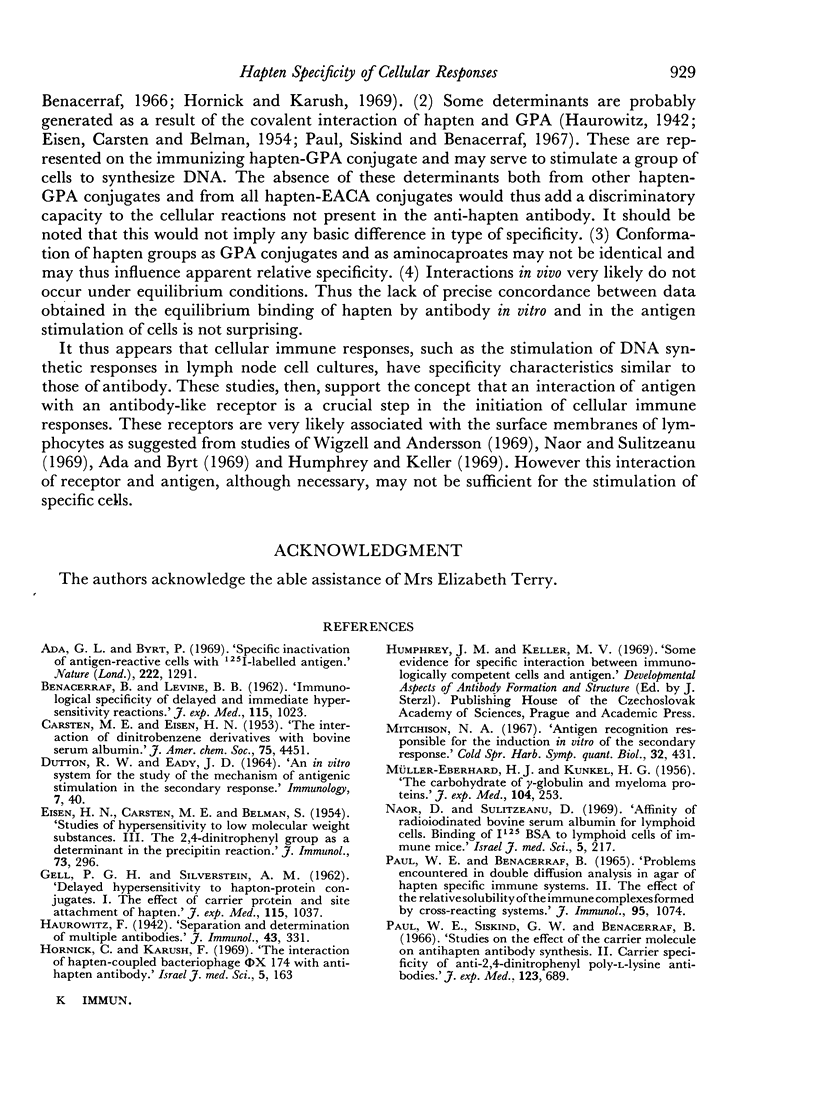
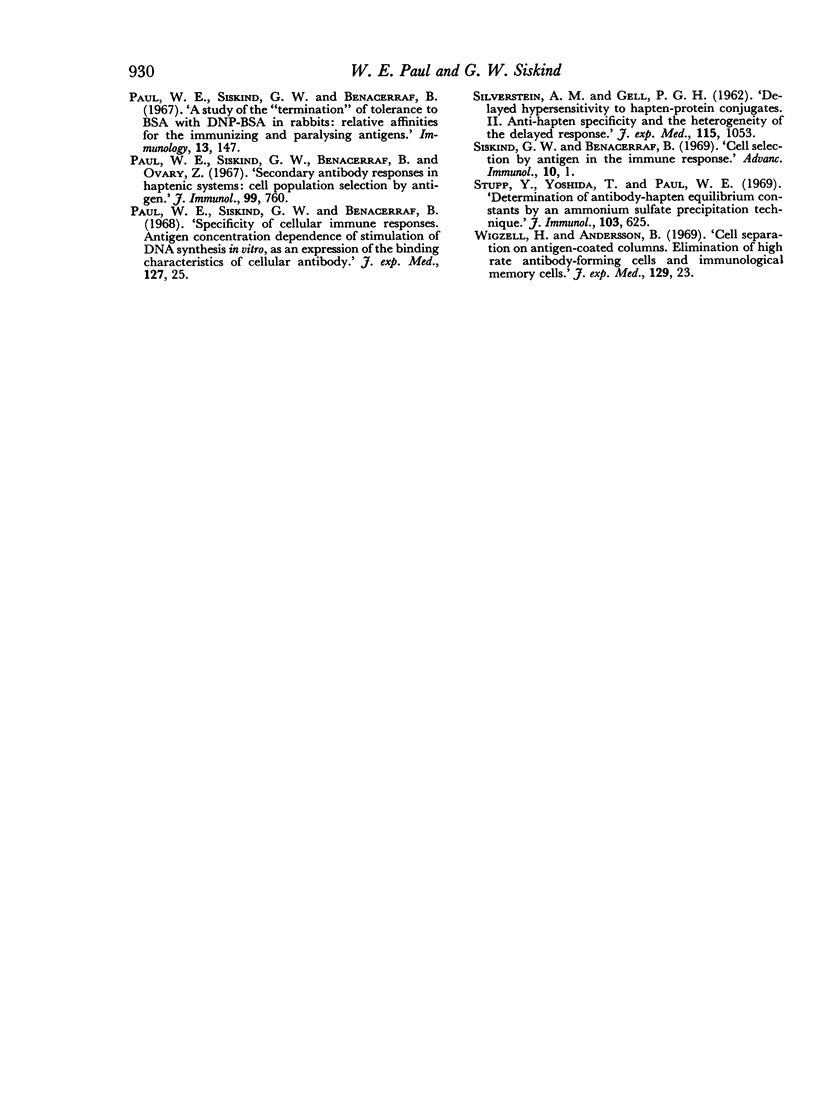
Selected References
These references are in PubMed. This may not be the complete list of references from this article.
- Ada G. L., Byrt P. Specific inactivation of antigen-reactive cells with 125I-labelled antigen. Nature. 1969 Jun 28;222(5200):1291–1292. doi: 10.1038/2221291a0. [DOI] [PubMed] [Google Scholar]
- BENACERRAF B., LEVINE B. B. Immunological specificity of delayed and immediate hypersensitivity reactions. J Exp Med. 1962 May 1;115:1023–1036. doi: 10.1084/jem.115.5.1023. [DOI] [PMC free article] [PubMed] [Google Scholar]
- DUTTON R. W., EADY J. D. AN IN VITRO SYSTEM FOR THE STUDY OF THE MECHANISM OF ANTIGENIC STIMULATION IN THE SECONDARY RESPONSE. Immunology. 1964 Jan;7:40–53. [PMC free article] [PubMed] [Google Scholar]
- EISEN H. N., CARSTEN M. E., BELMAN S. Studies of hypersensitivity to low molecular weight substances. III. The 2,4-dinitrophenyl group as a determinant in the preciptin reaction. J Immunol. 1954 Nov;73(5):296–308. [PubMed] [Google Scholar]
- GELL P. G., SILVERSTEIN A. M. Delayed hypersensitivity to hapten-protein conjugates. I. The effect of carrier protein and site of attachment to hapten. J Exp Med. 1962 May 1;115:1037–1051. doi: 10.1084/jem.115.5.1037. [DOI] [PMC free article] [PubMed] [Google Scholar]
- Hornick C. L., Karush F. The interaction of hapten-coupled bacteriophage phi-X-174 with antihapten antibody. Isr J Med Sci. 1969 Mar-Apr;5(2):163–170. [PubMed] [Google Scholar]
- MULLER-EBERHARD H. J., KUNKEL H. G. The carbohydrate of gamma-globulin and myeloma proteins. J Exp Med. 1956 Aug 1;104(2):253–269. doi: 10.1084/jem.104.2.253. [DOI] [PMC free article] [PubMed] [Google Scholar]
- Naor D., Sulitzeanu D. Affinity of radioiodinated bovine serum albumin for lymphoid cells. Binding of I-125-BSA to lymphoid cells of immune mice. Isr J Med Sci. 1969 Mar-Apr;5(2):217–229. [PubMed] [Google Scholar]
- Paul W. E., Benacerraf B. Problems encountered in double diffusion analysis in agar of hapten specific immune systems. II. The effect of the relative solubility of the immune complexes formed by cross-reacting systems. J Immunol. 1965 Dec;95(6):1074–1079. [PubMed] [Google Scholar]
- Paul W. E., Siskind G. W., Benacerraf B. A study of the 'termination' of tolerance to BSA with DNP-BSA in rabbits: relative affinities of the antibodies for the immunizing and the paralysing antigens. Immunology. 1967 Aug;13(2):147–157. [PMC free article] [PubMed] [Google Scholar]
- Paul W. E., Siskind G. W., Benacerraf B., Ovary Z. Secondary antibody responses in haptenic systems: cell population selection by antigen. J Immunol. 1967 Oct;99(4):760–770. [PubMed] [Google Scholar]
- Paul W. E., Siskind G. W., Benacerraf B. Specificity of cellular immune responses. Antigen concentration dependence of stimulation of DNA synthesis in vitro by specifically sensitized cells, as an expression of the binding characteristics of cellular antibody. J Exp Med. 1968 Jan 1;127(1):25–42. doi: 10.1084/jem.127.1.25. [DOI] [PMC free article] [PubMed] [Google Scholar]
- Paul W. E., Siskind G. W., Benacerraf B. Studies on the effect of the carrier molecule on antihapten antibody synthesis. II. Carrier specificity of anti-2,4-dinitrophenyl-poly-l-lysine antibodies. J Exp Med. 1966 Apr 1;123(4):689–705. doi: 10.1084/jem.123.4.689. [DOI] [PMC free article] [PubMed] [Google Scholar]
- SILVERSTEIN A. M., GELL P. G. Delayed hypersensitivity to hapten-protein conjugates. II. Anti-hapten specificity and the heterogeneity of the delayed response. J Exp Med. 1962 May 1;115:1053–1064. doi: 10.1084/jem.115.5.1053. [DOI] [PMC free article] [PubMed] [Google Scholar]
- Siskind G. W., Benacerraf B. Cell selection by antigen in the immune response. Adv Immunol. 1969;10:1–50. doi: 10.1016/s0065-2776(08)60414-9. [DOI] [PubMed] [Google Scholar]
- Stupp Y., Yoshida T., Paul W. E. Determination of antibody-hapten equilibrium constants by an ammonium sulfate precipitation technique. J Immunol. 1969 Sep;103(3):625–627. [PubMed] [Google Scholar]
- Wigzell H., Andersson B. Cell separation on antigen-coated columns. Elimination of high rate antibody-forming cells and immunological memory cells. J Exp Med. 1969 Jan 1;129(1):23–36. doi: 10.1084/jem.129.1.23. [DOI] [PMC free article] [PubMed] [Google Scholar]


